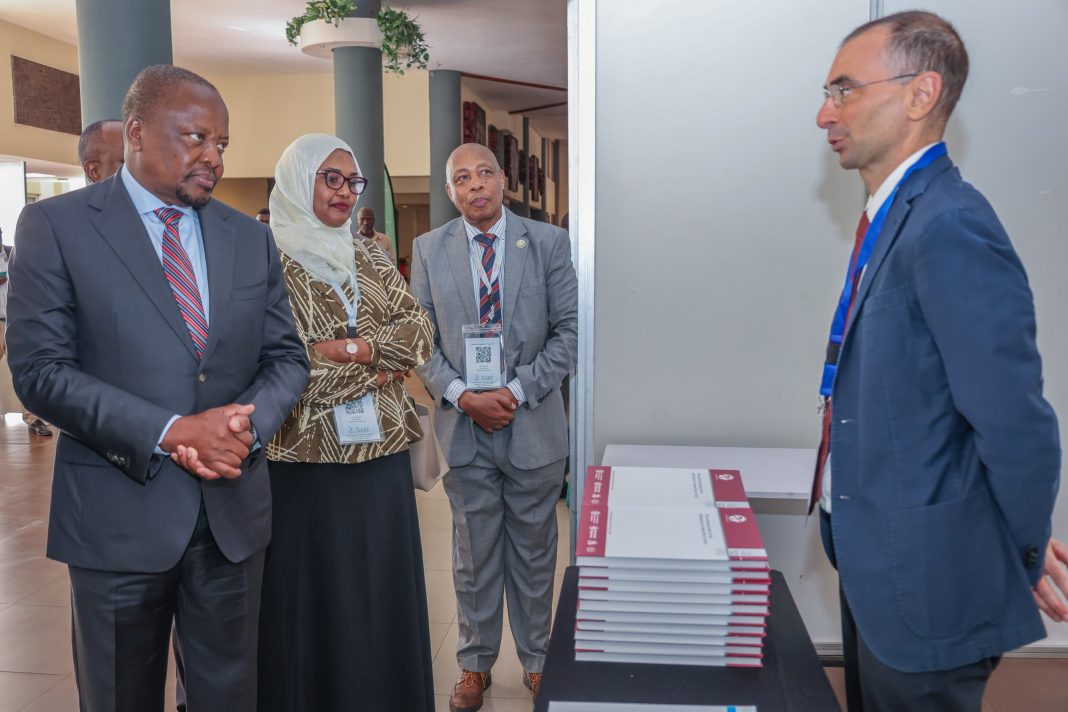By Job Okoth
The 37th International Scientific Council for Trypanosomiasis Research and Control (ISCTRC) conference officially opened in Kenya’s capital, Nairobi, with strong calls for partnerships and innovation to eliminate the deadly disease across Africa.
Hosted by the Government of Kenya, the conference is themed ‘Harnessing One Health Technologies and Innovations towards Eliminating Trypanosomiasis in Africa.’
The week-long event (15th -19th September) brings together over 150 delegates, including scientists, policymakers, and international partners such as the Food and Agriculture Organization (FAO), the World Health Organization (WHO), the International Atomic Energy Agency (IAEA), and the Bill & Melinda Gates Foundation.
Dr. Huyam Salih, Director of the African Union Inter-African Bureau for Animal resources (AU-IBAR) noted that the theme recognized the complex interplay between human, animal, and ecosystem health.
She emphasized the need to unlock the power of collaboration and innovation, guided by the One Health approach, to overcome persistent challenges, including fragmented institutional coordination, unsustainable funding, and emerging drug and insecticide resistance.
“Investing in integrated surveillance systems combining human, animal, and vector data is paramount to accelerating control efforts,” she added, calling for innovative public-private partnerships to improve access to treatment and vector control in rural communities.
Dr. Salih highlighted promising advances such as the African Union Digital One Health Platform, which enables member states and regional bodies to share data, conduct genomic surveillance, and apply predictive modeling to detect outbreaks early.

Mutahi Kagwe, Cabinet Secretary for Agriculture and Livestock Development, called on the global scientific community to continue working hand in hand with farmers, researchers, and governments to deliver lasting solutions to a disease that has burdened Africa’s agriculture for over a century.
Kagwe underscored the ongoing challenges posed by the disease vector, with approximately 23% of Kenya’s landmass infested with tsetse flies, affecting over 70% of livestock. The economic losses from reduced meat and milk production, treatment costs, and vector control are estimated at $143 million annually in Kenya alone, and $5 billion across tsetse-infested regions of Africa.
He commended international partners and the African Union Member States for their support, noting that collaboration is the surest path to safeguarding farmers’ livelihoods, boosting productivity, and securing food systems.
As Kenya continues to lead by example, this conference signaled a renewed commitment among African scientists, policymakers, and partners to harness cutting-edge technology, reinforce coordination, and prioritize community participation to achieve the continent’s vision of a trypanosomiasis-free future.
“While remarkable gains have been made, we must remember that eliminating sleeping sickness as a public health problem is only a milestone on the road to zero transmission. The struggle continues — Aluta Continua,” said Professor Joseph Ndung’u, Chairman of ISCTRC.







